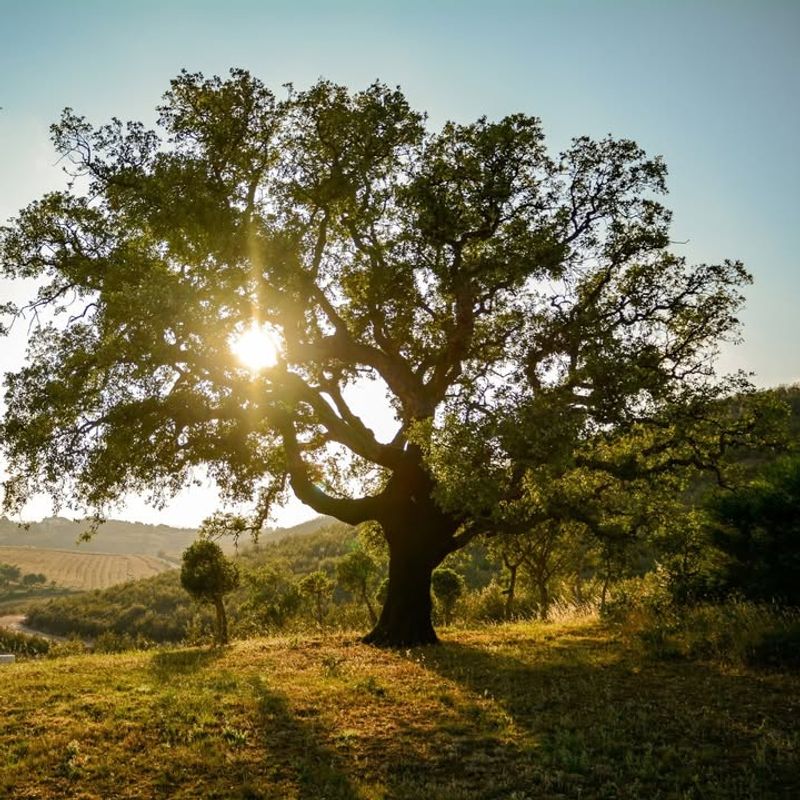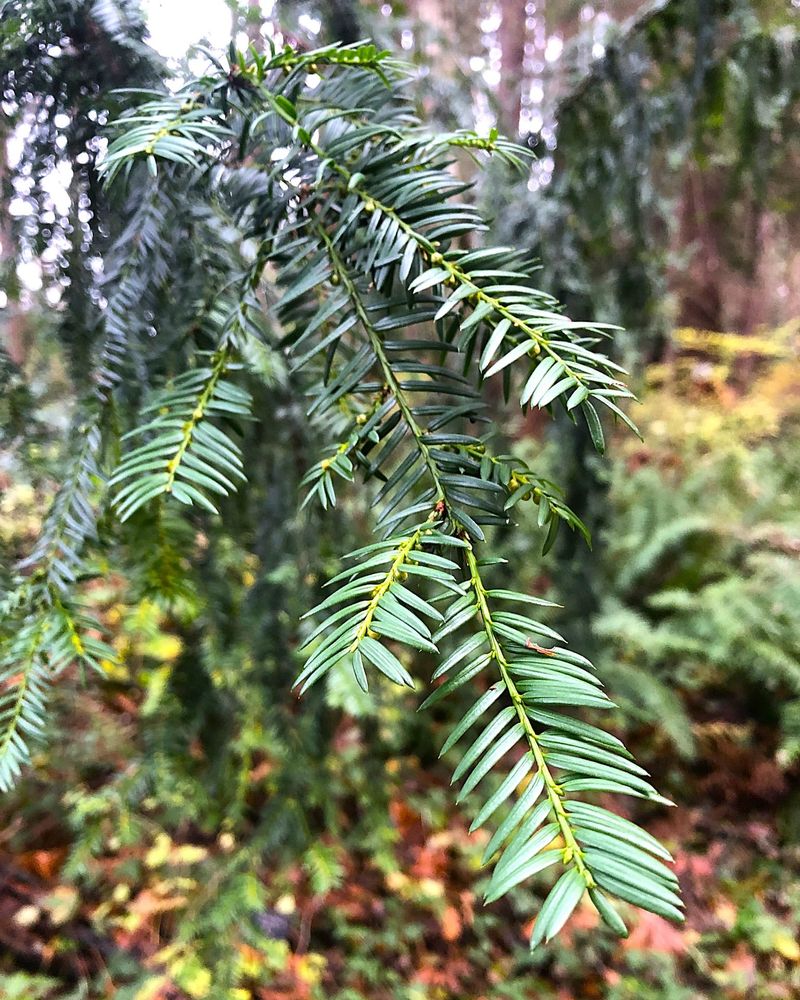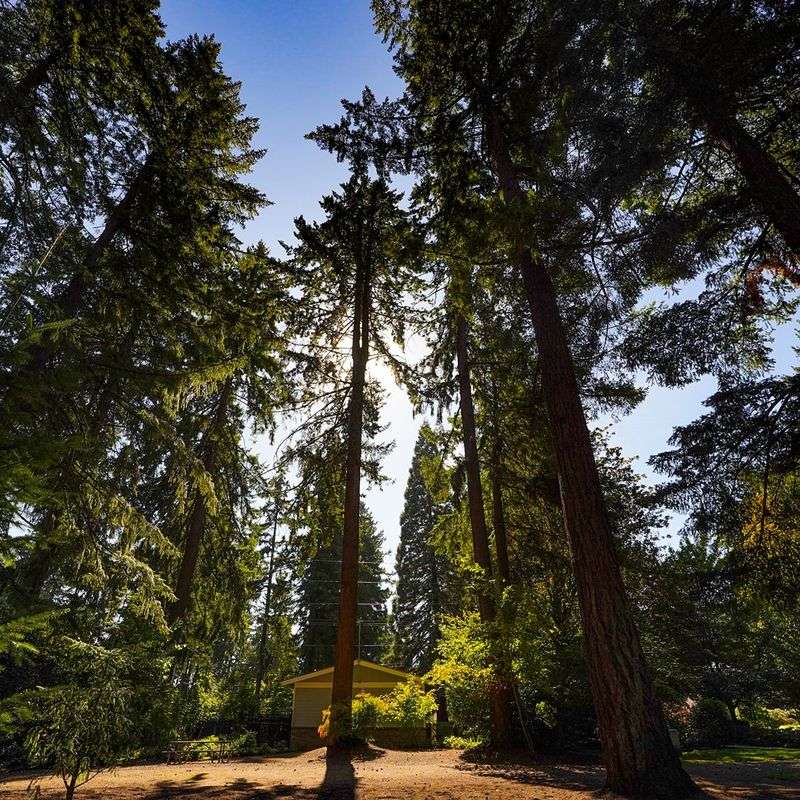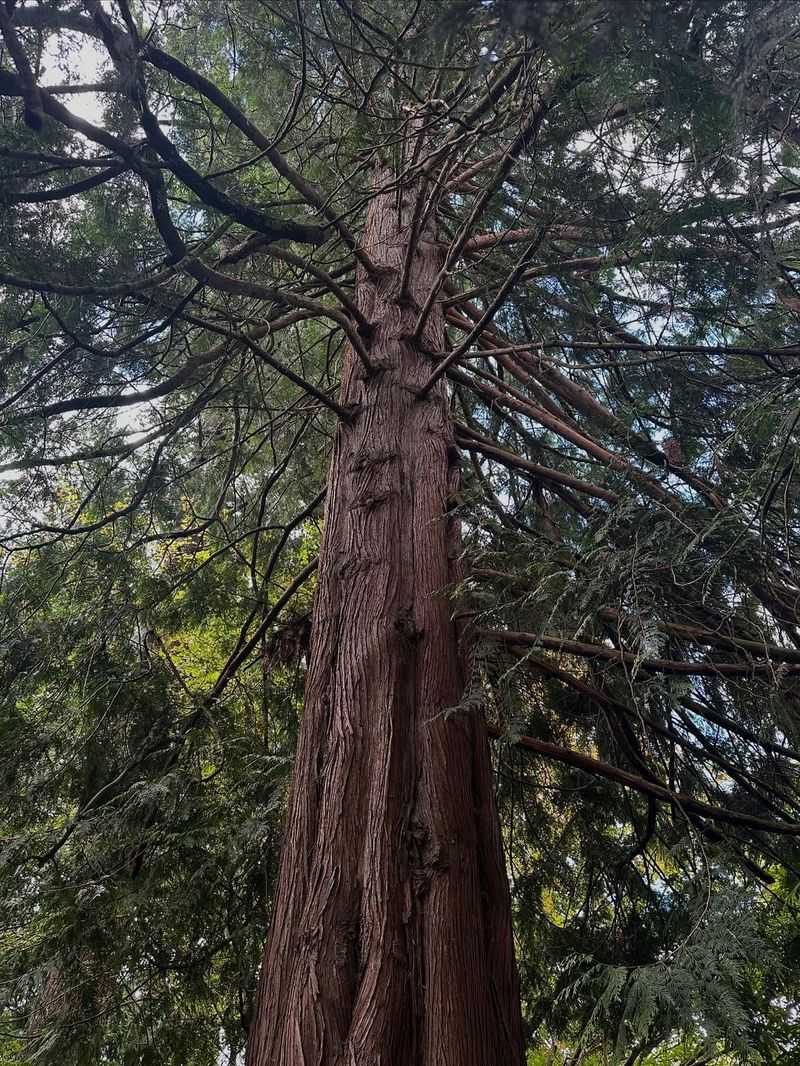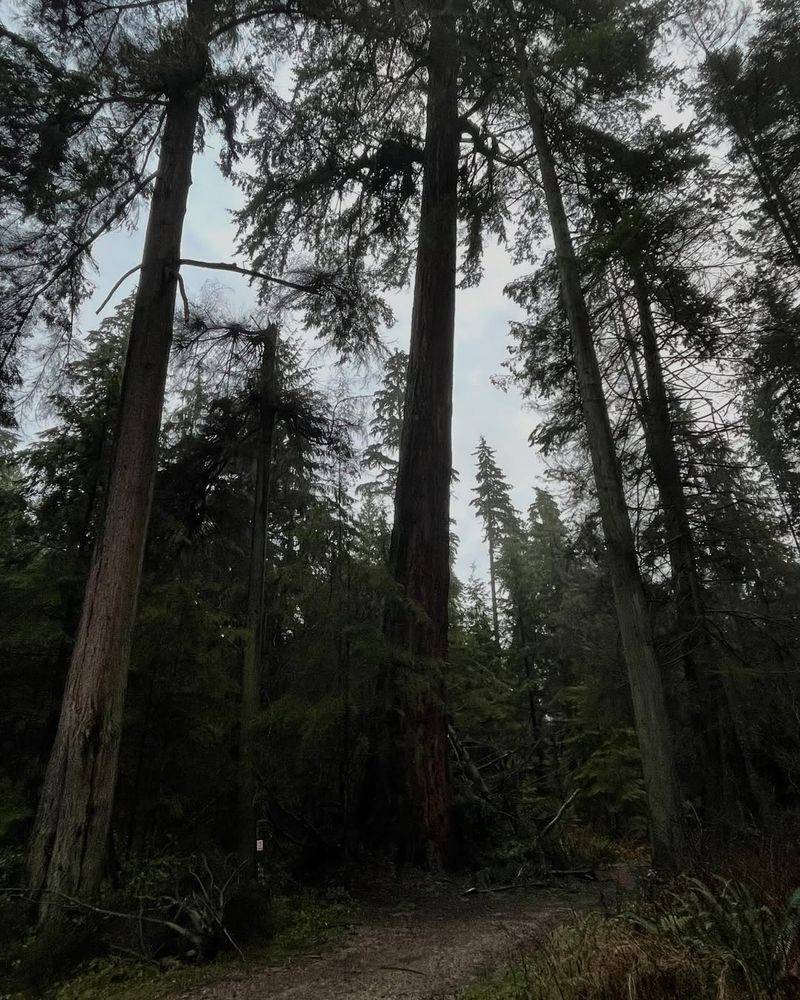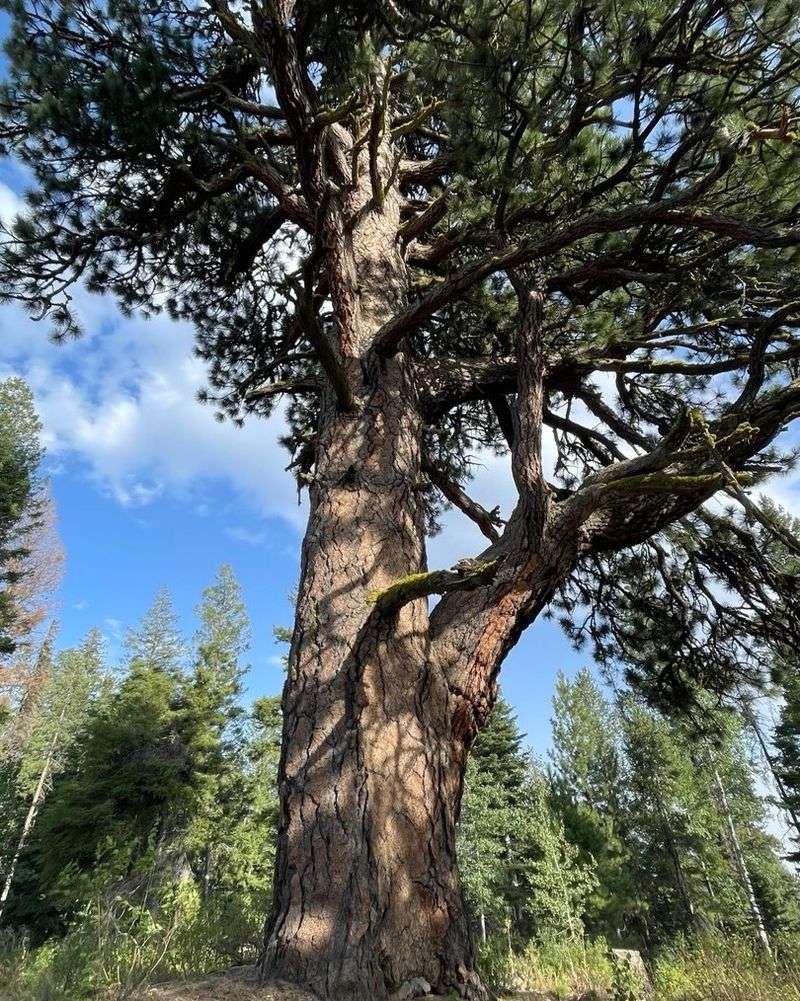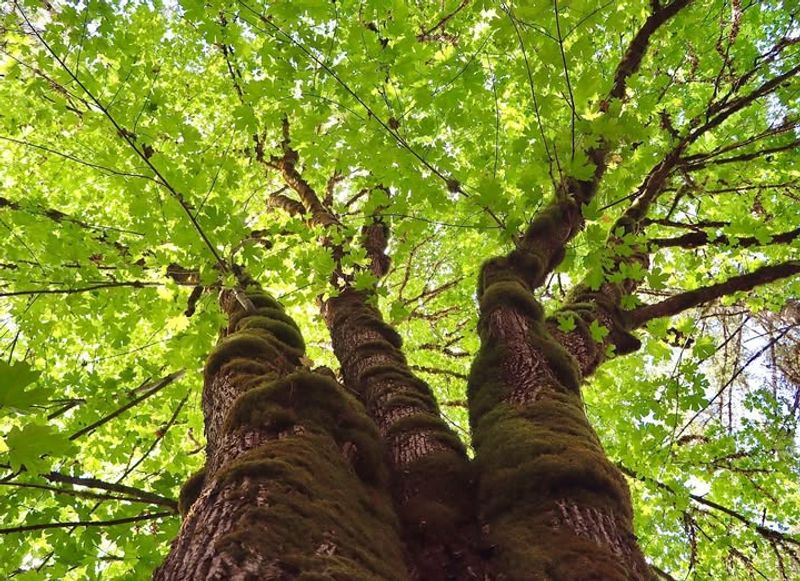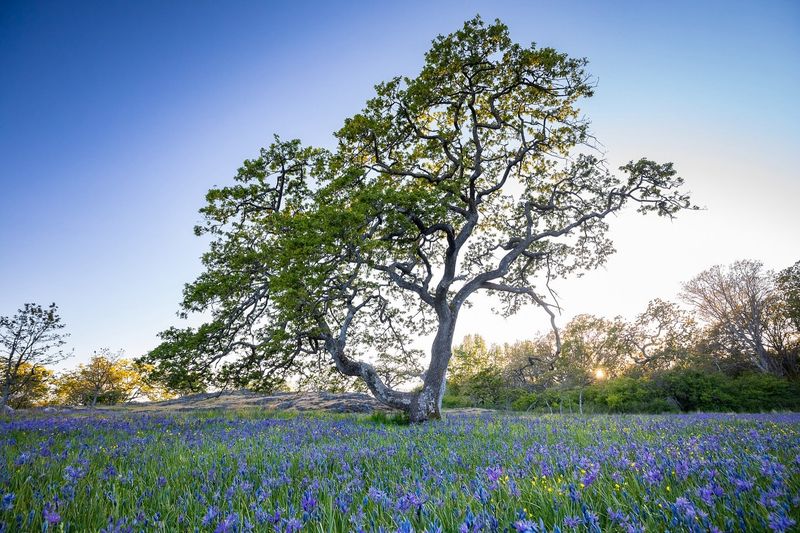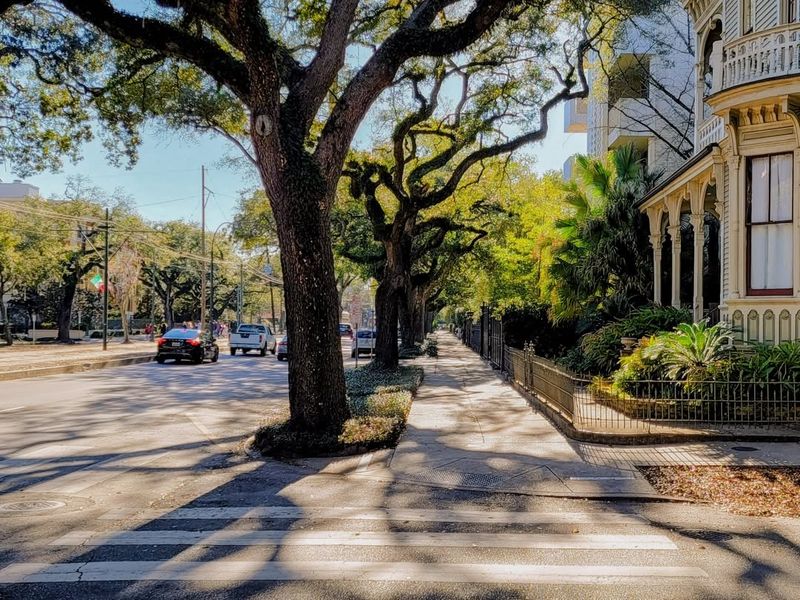Oregon’s forests are filled with beautiful trees that play important roles in our environment and communities. Some of these trees are protected by law, meaning you can’t just cut them down whenever you want.
No matter if they’re endangered species, historic landmarks, or vital to local wildlife, removing certain trees without permission can lead to serious fines and legal trouble.
1. Oregon White Oak
Ancient oaks like these have stood in Oregon for hundreds of years, providing homes for countless birds, insects, and mammals. Removing one without proper permits violates state conservation laws designed to protect diminishing oak habitats.
Wildlife depends on these trees for acorns, nesting sites, and shelter throughout the seasons. Local governments often require special assessments before any oak removal can happen.
Fines can reach thousands of dollars if you cut one down illegally, so always check with your city or county first.
2. Pacific Yew
Famous for producing a cancer-fighting compound called Taxol, the Pacific Yew holds both medical and ecological significance. Cutting down this slow-growing tree without authorization can result in federal penalties since it’s monitored for conservation purposes.
Found mostly in shaded forest areas, these trees take decades to mature and support unique ecosystems. Many Oregon counties have strict regulations about their removal.
Before touching a Pacific Yew, contact forestry officials to understand what permits you might need.
3. Heritage Trees
Designated heritage trees carry historical or cultural importance to Oregon communities, often marking significant events or locations. Removing one of these landmarks without approval breaks local preservation ordinances that protect community history.
Many cities maintain official heritage tree registries that identify which trees have special protected status. Property owners must apply for removal permits and often face denial unless the tree poses serious safety risks.
Violating heritage tree laws can bring hefty fines and required replacement plantings.
4. Western Redcedar
Culturally sacred to many Native American tribes, Western Redcedar trees hold spiritual significance beyond their ecological value. Oregon law protects many of these ancient giants, especially those on tribal lands or designated conservation areas.
Their aromatic wood and towering presence make them tempting to remove, but doing so without permission violates both state and federal regulations. Tribal consultation may be required before any removal decisions.
Respect for cultural heritage means checking multiple agencies before cutting these magnificent trees.
5. Douglas Fir Over 100 Years Old
While Douglas Firs grow throughout Oregon, century-old specimens often fall under old-growth protection laws that limit removal. Mature trees like these provide critical habitat for spotted owls, flying squirrels, and other protected wildlife species.
Urban forestry departments frequently classify large Douglas Firs as significant trees requiring special permits for removal. Environmental impact studies might be necessary before cutting one down.
The penalties for unauthorized removal increase with the tree’s age and ecological importance, so always verify regulations first.
6. Ponderosa Pine In Protected Zones
Ponderosa Pines growing in conservation zones, wildlife corridors, or fire-adapted ecosystems receive special protection under Oregon environmental laws. Their vanilla-scented bark and fire-resistant qualities make them ecologically valuable in managing forest health.
Removing these pines from protected zones without authorization disrupts carefully managed ecosystems and violates conservation agreements. Many areas require forestry plans before any tree removal.
Check with the Oregon Department of Forestry to understand which zones have restrictions on Ponderosa Pine removal.
7. Big Leaf Maple In Riparian Areas
Big Leaf Maples growing along streams, rivers, or wetlands stabilize banks and filter water, making them protected under riparian conservation laws. Oregon’s waterway protection statutes strictly regulate tree removal within certain distances of water bodies.
Cutting down riparian maples without permits can result in both state fines and federal Clean Water Act violations. These trees prevent erosion and provide shade that keeps water temperatures safe for salmon.
Always consult with the Department of Environmental Quality before removing streamside trees.
8. Garry Oak
Garry Oaks support one of North America’s most endangered ecosystems, making their protection a priority throughout the Willamette Valley. Only about five percent of original oak habitat remains, so every tree counts toward preserving biodiversity.
Removing a Garry Oak without proper authorization violates habitat conservation plans that many Oregon cities enforce. Rare butterflies, birds, and wildflowers depend on these oak savannas for survival.
Before cutting any Garry Oak, contact local environmental services to learn about protection requirements and possible alternatives.
9. Street Trees In Urban Areas
Municipal codes throughout Oregon cities designate street trees as public property that cannot be removed without city approval. Even if a street tree sits on your property’s planting strip, it likely belongs to the city and requires official permits for removal.
Urban forestry departments manage these trees as part of community infrastructure that provides shade, air quality benefits, and aesthetic value. Unauthorized removal can result in fines and mandatory replacement costs.
Contact your city’s urban forestry office before touching any tree near public sidewalks or streets.
10. Trees In Scenic Corridors
Oregon’s scenic byways and designated view corridors have special protections for trees that contribute to the landscape’s visual character. Removing trees from these areas without authorization violates scenic preservation laws meant to protect Oregon’s natural beauty.
State and local governments review removal requests carefully to ensure scenic values aren’t compromised. Property owners near scenic corridors must often prove tree removal won’t damage protected viewsheds.
Check with the Oregon Parks and Recreation Department if your property falls within a designated scenic area.


